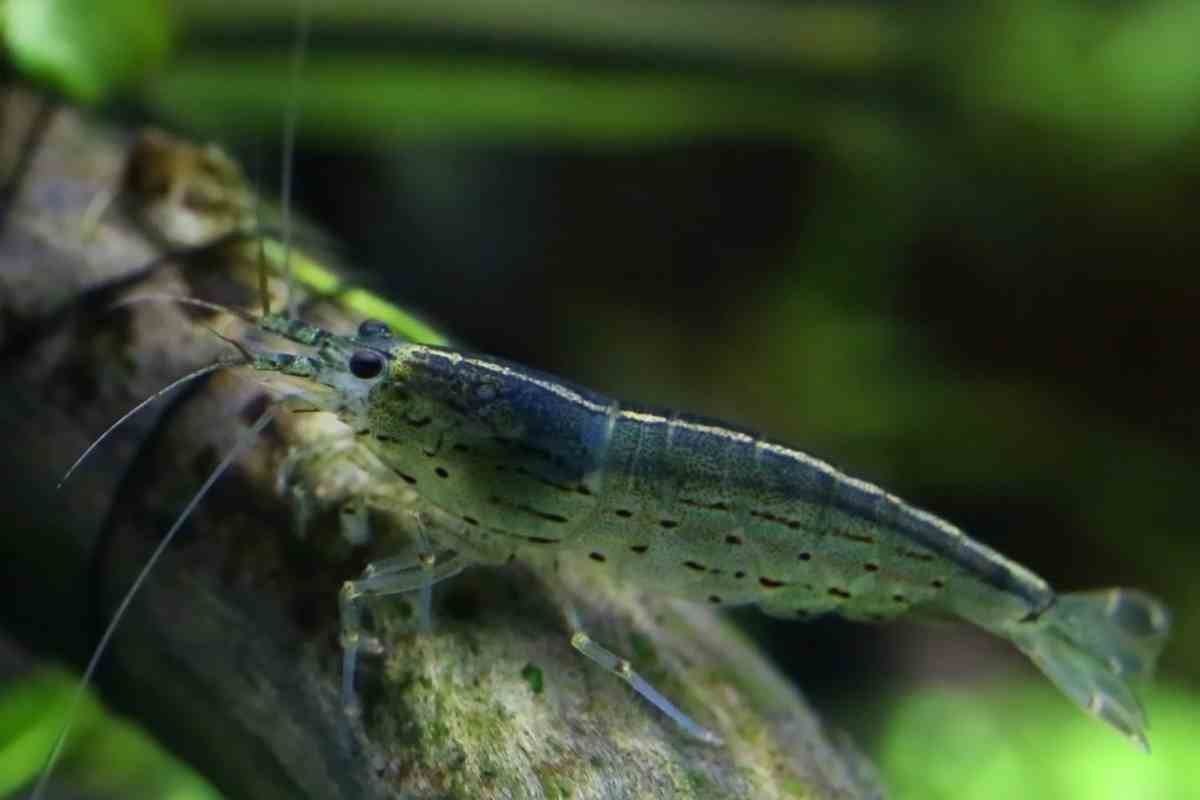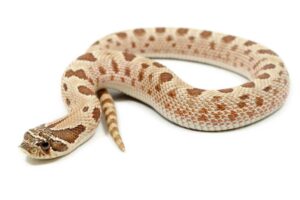Amano shrimp and Ghost shrimp are two types of freshwater shrimp that are popular among fish enthusiasts.
They both have their own unique features and benefits, which is why it can be difficult to decide which one is the best for you.
In This Article – We will compare Amano Shrimp vs Ghost Shrimp in terms of appearance, size, diet, and cost. We will also provide a verdict on who comes out as the winner in the battle of Amano shrimp vs Ghost shrimp.
Table of Contents
Amano Shrimp vs Ghost Shrimp Quick Overview
| Overview | Amano Shrimp | Ghost Shrimp |
|---|---|---|
| Scientific Name: | Caridina multidentata | Neotrypaea californiensis |
| Alternate Name(s): | Japanese shrimp, Yamato shrimp, and algae shrimp | Glass Shrimp, Eastern Grass Shrimp |
| Family: | Atyidae | Palaemonidae |
| Size: | 1 to 2 inches | 1 inch |
| Diet: | Omnivorous | Omnivore |
| Lifespan: | 2 to 3 years | 1 year |
Amano Shrimp vs Ghost Shrimp Compared: How They Differ
The main difference between Amano and Ghost shrimp is that Amano shrimps are bottom feeders, feeding on the tank’s substrate. Whereas Ghost shrimp spend a significant portion of their day searching for food in the water column.
Amano Shrimp vs Ghost Shrimp Cost
Amano shrimp are definitely more expensive than ghost shrimp. Amano shrimp typically cost around $3.99 per shrimp while ghost shrimp only cost around $1 per shrimp.
However, the price difference is worth it in my opinion because Amano shrimp are much better at eating algae and keeping your tank clean.
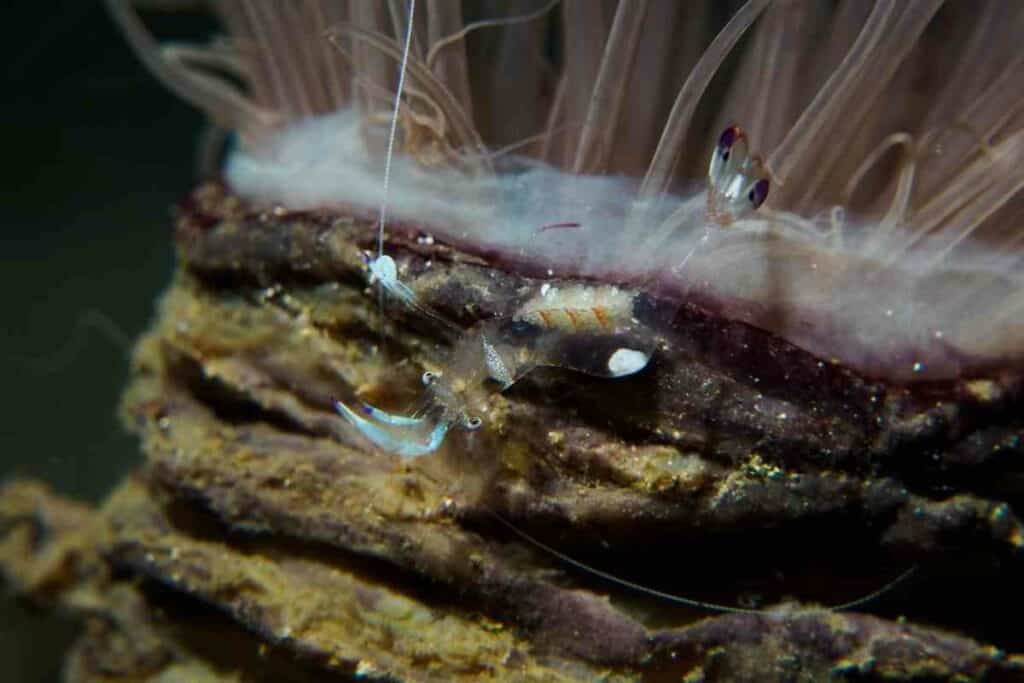
They also live a lot longer than ghost shrimp, so you won’t have to worry about replacing them as often.
If you’re looking for an affordable shrimp that will help keep your tank clean, ghost shrimp are the way to go.
But if you want the best possible option and are willing to pay a bit more, Amano shrimp are definitely worth considering.
Amano Shrimp vs Ghost Shrimp Size
Amano shrimp are a larger species of shrimp, measuring up to two inches in length.
They have a long body shape and a dark brown color with lighter bands across their back.
Amano Shrimp
Amano Shrimp are omnivorous invertebrates that eat a variety of things they find while scavaging for food in their tank, which may be naturally there.
It’s important to note that while Amano Shrimp are known for being algal voracious, they still need more than decaying plants to thrive.
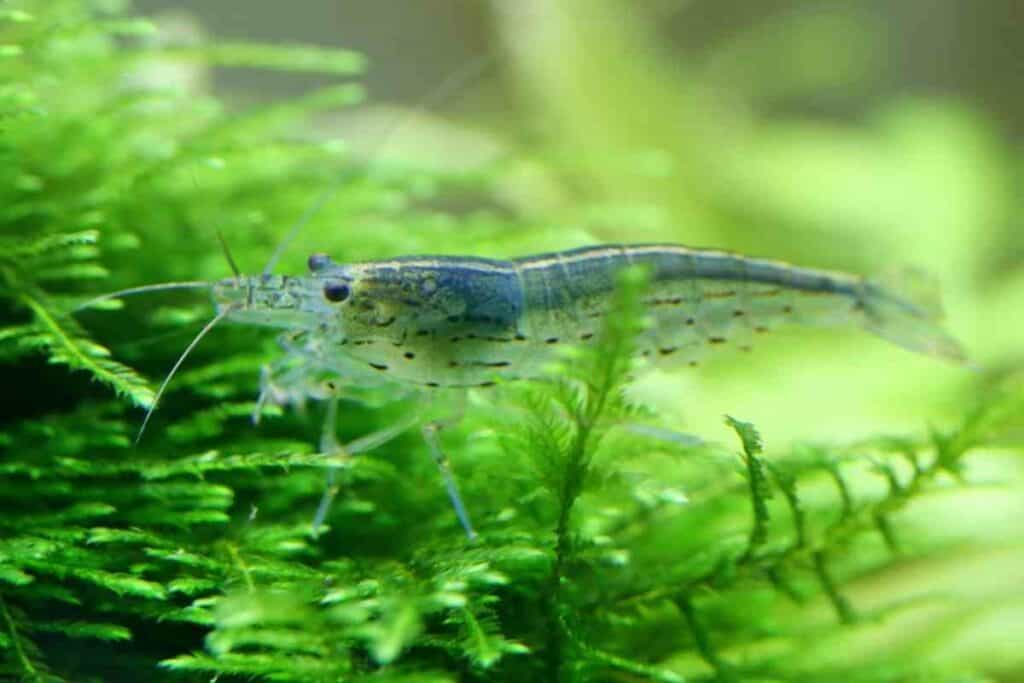
Amanos are larger than Ghost shrimp and come in stripes. The colors of the shrimp will fade as it grows older, however, certain color varieties retain their vibrancy all of their lives.
Amanos are white with red highlights on the body and may grow up to three inches long and two inches wide.
They are also one of the more hardy species of freshwater shrimp, making them an ideal choice for beginner shrimp keepers.
Ghost Shrimp
Ghost shrimp, on the other hand, are smaller in size, only reaching a maximum length of one inch.
They have a translucent body with dark spots and stripes.
Ghost shrimp are omnivores, meaning they will eat both plants and meat.
They are not as hardy as Amano shrimp, making them a better choice for more experienced shrimp keepers.
Amano Shrimp vs Ghost Shrimp Habitat
Amano shrimp and ghost shrimp come from different parts of the world.
Amano shrimp are originally from Japan, while ghost shrimp are native to North America.
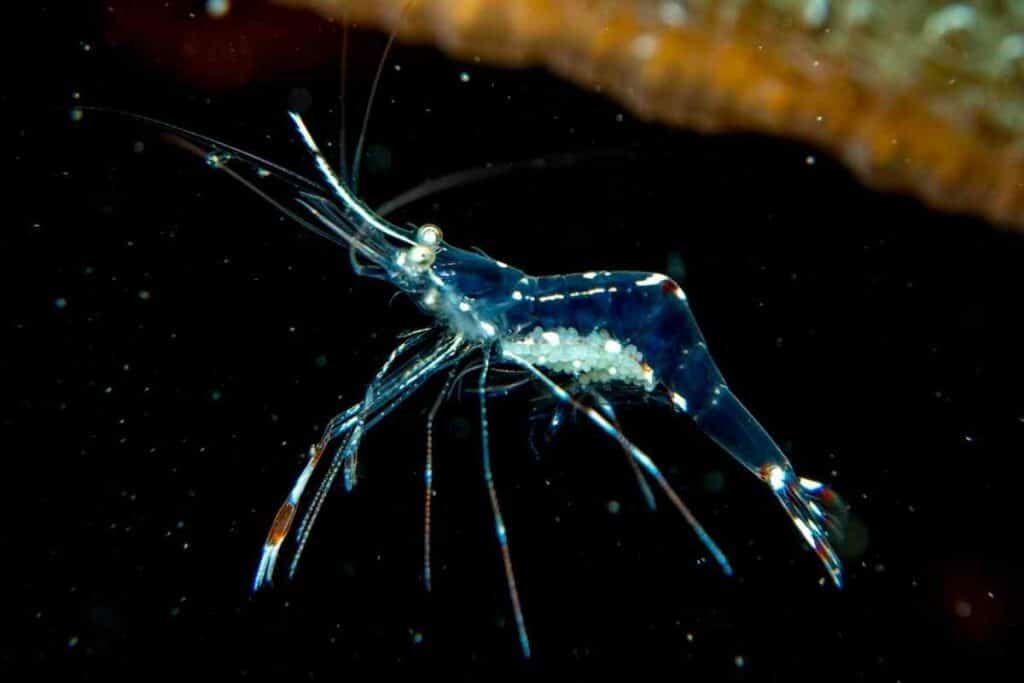
Because of this, their habitats differ as well:
- Amano shrimp thrive in colder water temperatures, ranging from 70°F (21°C) and 73°F (22°C).
- Ghost shrimp can tolerate a wider range of water temperatures, from 68°F (20°C) and 75°F (24°C).
- Amano Shrimp Water PH: 6.0 to 7.0
- Amano Shrimp Water Hardness: 6.0 to 8.0 DKH
- Ghost Shrimp Water PH: 7.0 and 8.0
- Ghost Shrimp Water Hardness: 6.0 to 8.0 DKH
Amano shrimp are also known to live in brackish water conditions, while ghost shrimp cannot.
This means that Amano shrimp can survive in waters that are saltier than freshwater, but not as salty as marine water.
Ghost shrimp will only do well in pure freshwater conditions.
Amano Shrimp vs Ghost Shrimp Tank Size
Amano shrimp can get up to about two inches in length, while ghost shrimp only grow to be about an inch long.
As a Result: You will need a larger tank if you want to keep Amano shrimp.
Amano Shrimp
A single Amano shrimp needs at least 10 gallons of water, and one gallon per inch depth of water in the aquarium.
To remove harmful ammonia from their surroundings, Amano shrimps live in highly oxygenated tanks with a good filtration system to minimize the risk of poisoning.
Ghost Shrimp
Ghost Shrimp do not require a large tank, a 5-gallon tank would be sufficient unless they are kept with other types of fish.

Ghost Shrimp are docile, making them suitable for confinement with other fish or shrimp in tanks.
Amano Shrimp vs Ghost Shrimp Diet
Amano shrimp are omnivorous and will eat just about anything.
Their diet consists of algae, detritus, plants, and small invertebrates. They are constantly grazing and picking at things.
Ghost Shrimp
Ghost shrimp are also omnivorous but their diet is a little different.
They mainly eat algae and detritus but will also eat small invertebrates. They are not as constantly grazing as Amano shrimp, but they will scavenge for food if necessary.
In the Wild – Both of these shrimp species would eat a variety of things depending on what is available.
In an aquarium, you can give them a diet that consists mostly of algae wafers, sinking pellets, and frozen food.
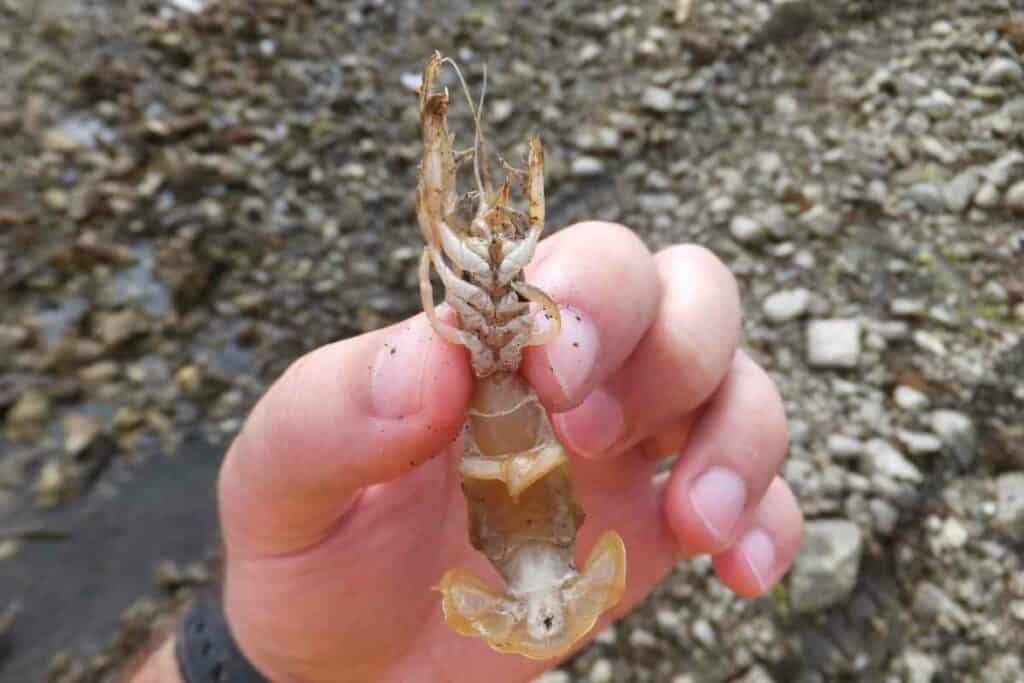
They will also eat blanched vegetables like:
- zucchini
- cucumber
- and spinach
Both Amano and ghost shrimp can be fed a wide variety of food, but it’s important to note that their diets should be varied.
Amano Shrimp
Amano shrimp are better suited for a planted aquarium while ghost shrimp can do well in both planted and non-planted aquariums.
It’s not a good idea to feed ghost shrimp and Amano shrimp together because Amanos will steal food from their smaller counterparts.
Amano Shrimp vs Ghost Shrimp Lifespan
The lifespan of a Ghost shrimp is around one year, while the Amano shrimp can live for up to two to three years.
This difference in lifespan is due to the fact that Amano shrimp are better at adapting to changing environmental conditions and have a higher resistance to disease.
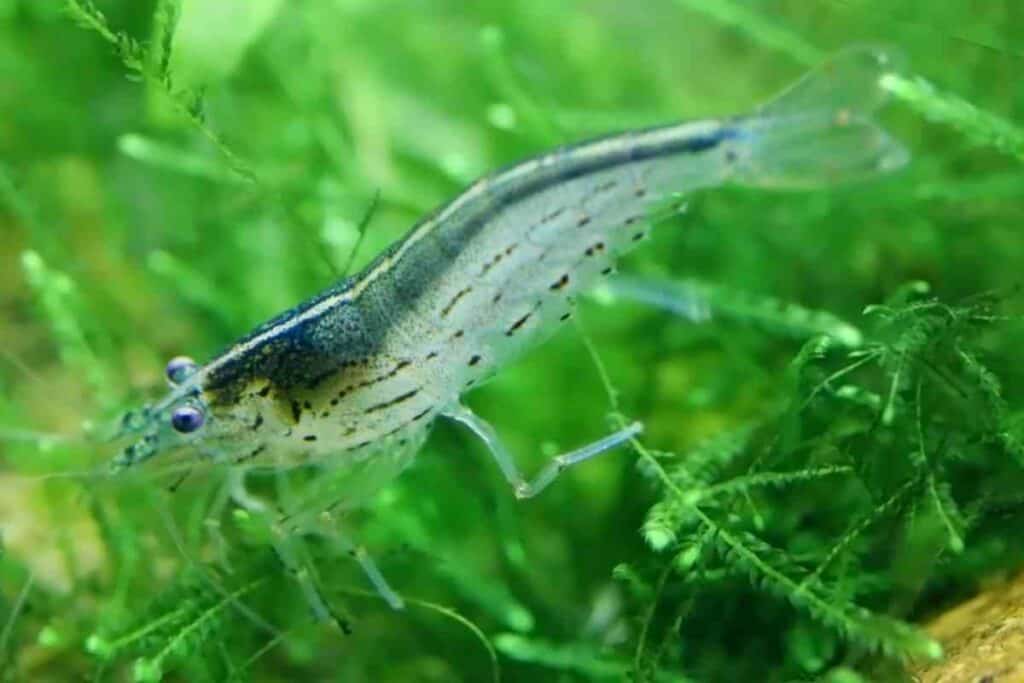
Amano shrimp are also larger than Ghost shrimp, making them better suited for life in a community tank.
In General – Both the Amano and Ghost shrimp make great additions to any freshwater aquarium, but if you’re looking for a long-term pet, the Amano shrimp is the way to go.
Amano Shrimp vs Ghost Shrimp Breeding
When it comes to breeding, Amano shrimp have a higher rate of success than Ghost shrimp. Amano shrimps can breed and produce within three months, while ghost shrimp take up to nine months before they are sexually mature enough for reproduction.
Amano shrimp also produce more offspring per mating than ghost shrimp.
However, both species are capable of successful breeding in captivity.
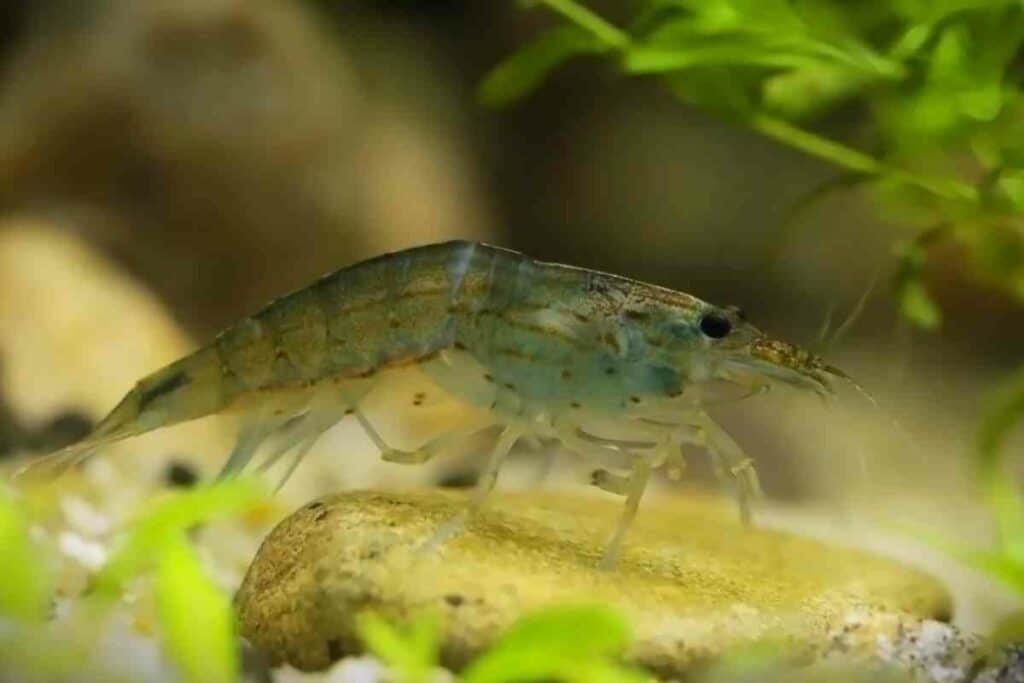
If you are planning to breed either of these species, it is important to provide them with plenty of hiding places and a quality diet.
Both shrimp species are cannibalistic, so it is important to remove any pregnant females from the main breeding tank to avoid having them eaten.
Amano Shrimp vs Ghost Shrimp Temperament
Amano shrimp are known to be very shy and reclusive, while ghost shrimp are much more outgoing.
Amano shrimp tend to stay hidden away in the shadows, while ghost shrimp are much more likely to be out in the open.
Amano shrimp are also known to be very peaceful, while ghost shrimp can be quite aggressive. Ghost shrimp are also known to be much more active than Amano shrimp.
Amano shrimp are a great choice for aquarists who want peaceful and shy shrimp. Ghost shrimp are a great choice for aquarists who want an active and outgoing shrimp.
Conclusion
Both Amano shrimp and ghost shrimp have their own unique strengths and weaknesses.
If you want a hardy and low-maintenance shrimp that will help keep your aquarium clean, then the Amano shrimp is a great choice.
If you are looking for a more active shrimp that will help control algae growth, then the Ghost shrimp is a better option.
Ultimately, the decision comes down to personal preference and what will work best for your aquarium.

